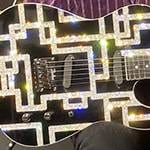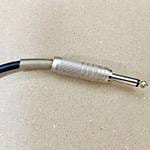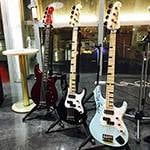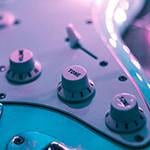It's been a while, Cheena here.
Here i the ultimate guitar, the Wishbass.
And,I finally got my hands on one.
00. What is the Wishbass?
Wishbass (now known as Wish Instruments) is the generic name for a brand of musical instruments and basses led by Stephen Wishnevsky, an individual luthier in the United States.
Its characteristics are well known, but for those who do not know, they are:
- Basically no truss rod, no frets, and no paint
- Basically a very thick through neck
- Slotted head like a classical guitar
- Super cheap (number of strings x $100 conversion, including shipping)
- Options like fretting, flat head, fret lines, etc. start at $100
This is an instrument maker that seems like it smells pretty bad...
Its sound quality is extremely natural and woody. Some say it is due to the extremely high percentage of wood. Others say it is due to his instrument-making skills, but what I can say without a doubt is that Wishbass is a sophisticated instrument despite its rustic appearance.
Are there dents in the wood from when you bought it? Is the wood charred? That's about it.
01. Order details & specifications
Most of the time, I order custom basses, except when I buy them from the official Wishbass eBay site. This time, too, I had a bass made to look like the legendary bass made by a certain phantom Japanese maker.
(Actually, it has been several years at this point. I'll spare you the story and the process: ......)
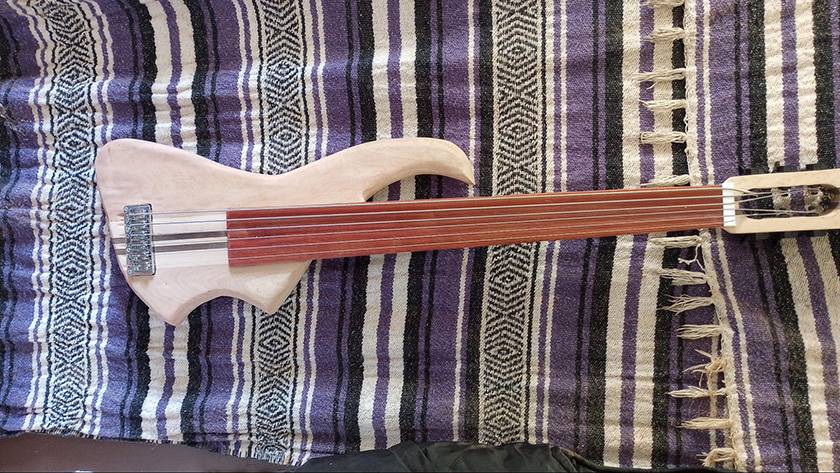
| Neck Material: | Maple + possibly rosewood 5-ply through neck |
| Fingerboard Material: | Padouk |
| Body Material: | White Mahogany *A substitute wood that is not true mahogany of the Fabaceae family. There are several species of wood called white mahogany, including Tabebuia donnell-smithii (commonly known as primavera), which belongs to the Lauraceae family, and Eucalyptus acmenoides (commonly known as valerian), which belongs to the olive family. |
| Weight: | 3.9kg |
| Scale: | 34inch |
| Tuning: | LB-E-A-D-G-HC |
| Fret count: | More than 36 |
| Nut width: | 58mm |
| Neck thickness: | 35mm |
| Amt of space between strings and bridge: | 16mm |
| Electrical component: | None |
It will eventually be equipped with a LACE Aluma Bass Bar 4.5. The multi-string has basically no pickup options, and the only choice is to use a case width of 4.5” or greater.
Basically, Wishbass is mostly 1 PU due to the very long fretboard, and this plane will probably be 1 PU as well.
Price: $600
Regarding payment to Wishbass...they only accept payment via PayPal. This PayPal is a crook and will charge you a rather high fee if you use PayPal's currency conversion. However, if you use the option at the time of payment to have the conversion done by the credit card company, it may be a little cheaper.
This time, the payment amount was about 46,000 yen using the PayPal currency conversion, but when the payment was made by the credit card company, 44500 yen was paid.
Note that it takes time for the credit card company to determine the payment amount, whereas the PayPal payment amount is determined instantly. If the yen drops or the dollar rises sharply during this time, the currency conversion including fees may be less expensive.
Regarding customs duties and consumption taxes on imports...this time, I will pay the consumption tax + customs clearance fee on delivery. There is no customs duty (see the April 1, 2023 edition of the Schedule of Customs Tariffs in Practice, Part 18, Category 92), and the consumption tax is “60% of the price multiplied by the consumption tax rate,” meaning that as of August 2023, 6% of the main price is the total amount paid.
02. Modifications
The box you will receive will be a bit rough, but there is no particular damage warranty. Since the cushioning material and instruments are shoved directly into the box, you will need to open it inside a plastic bag, in the bathroom, or unpack it outside to begin with. Sometimes a Coke bottle is used for cushioning.
When the instrument arrives, wipe it lightly with water and apply oil. One layer of the usual Xotic Oil Gel prevents moisture and the wood from drying out.
This paint flows well during application, but it dries quickly and starts to become sticky. Apply it quickly.
The fingerboard should be wiped thoroughly with lemon oil. When the red powder is no longer present, beeswax should be applied. Moisturizing the unpainted rhineless fingerboard is fun work, but there is no point in putting too much on, so use it in moderation.
I played it lightly at this stage. ......The thickness of the neck, which is unique to Wishbass, is quintessential Wishbass. In terms of simple width, it is equivalent to the Warmoth Gecko 6, but it is more than twice as thick as the Warmoth Gecko 6. It is more like a double bass than an electric bass.
The neck is covered with dents or cutting marks even if nothing is done to it, so I polished it. It is not so much of a problem when played normally, but if you slide your hand over them with a glissando, the unevenness is quite noticeable.
The work process is omitted because it looks so plain. Just polish it with some sandpaper and reapply.
Next, work on the body with a firm hand.
The body looks roughly similar to this drawing. I will modify the body based on the drawings because I want to make it look like Wishbass.
The current body seems to be smaller than the size on the drawing, so I will adjust the shape of the body, horn, and cutaway to make it look similar.
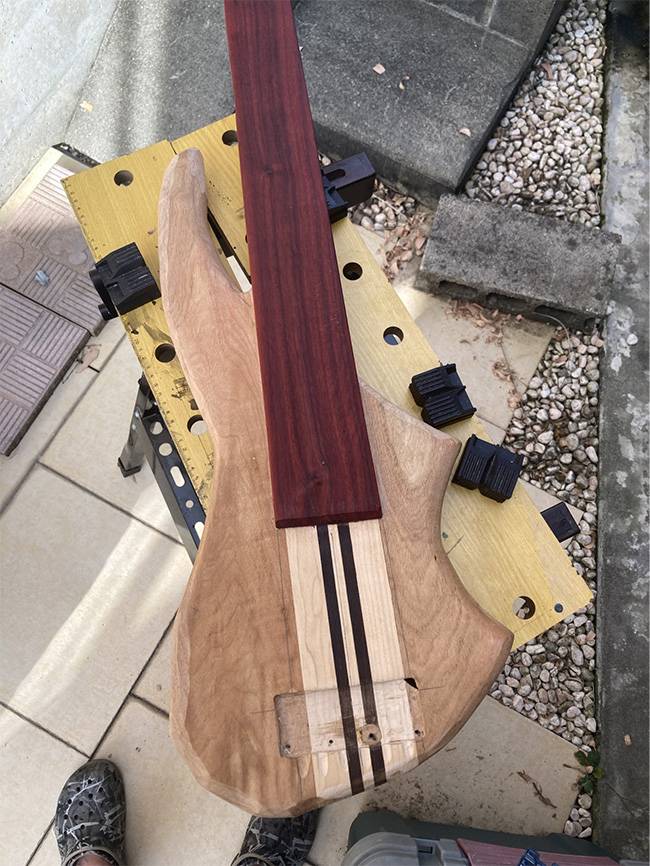
The bridge is horribly off-center and will need to be adjusted. The upper right corner of the bridge has been dropped in and penetrated through to the seating area, but this will be filled in and replaced with another bridge.
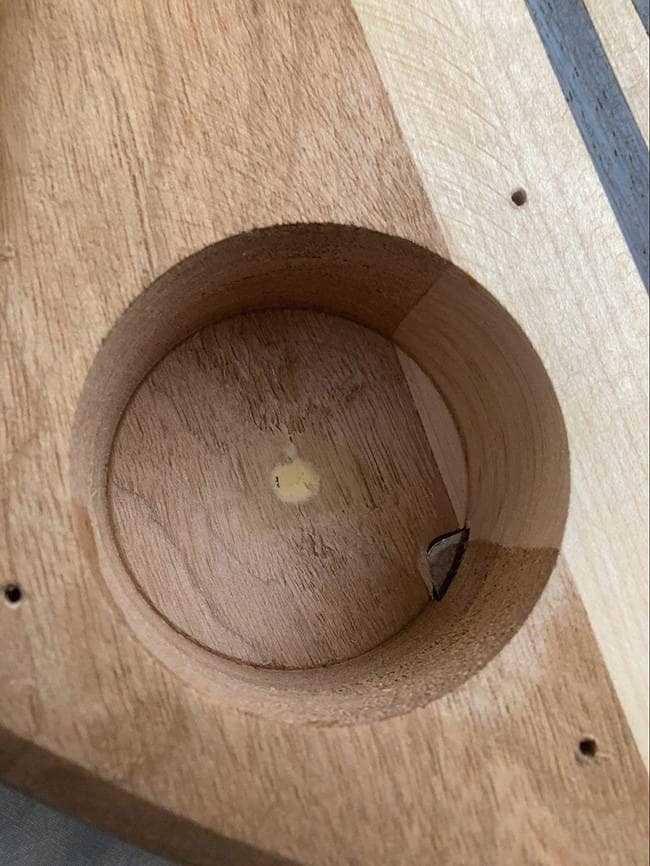
You can see the original bridge in the lower right corner of the circle. By the way, the center of the seating is filled with wood putty because the tip of the fastener bit penetrated to the top.
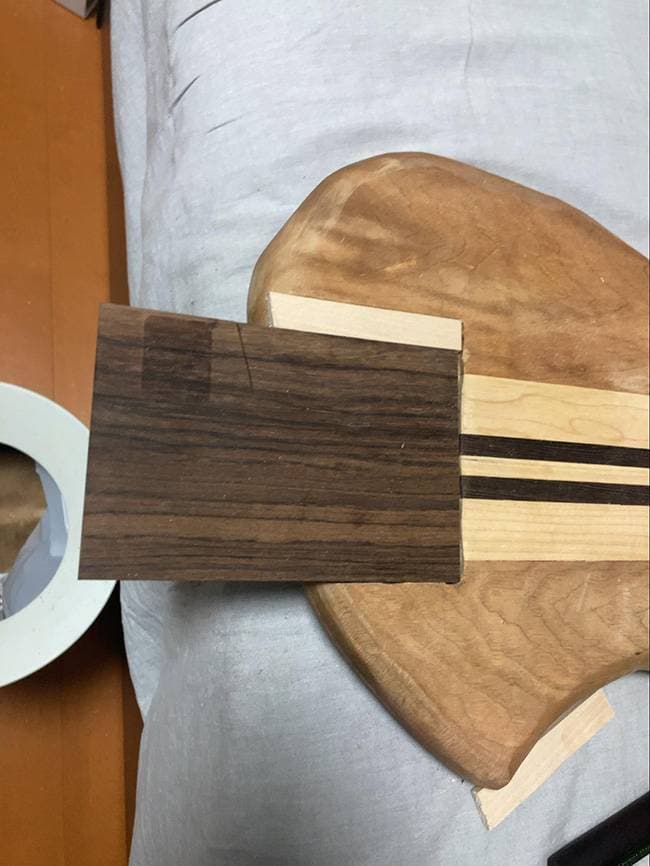
Fill in with rosewood and cherry. Pour a tight bond through the gap and apply pressure with a clamp. The protruding part is scraped off with an NT dresser.
The parts with a little gap are rubbed with wood putty.
The bridge is a solo bridge that costs about 250 yen each. It works fine.
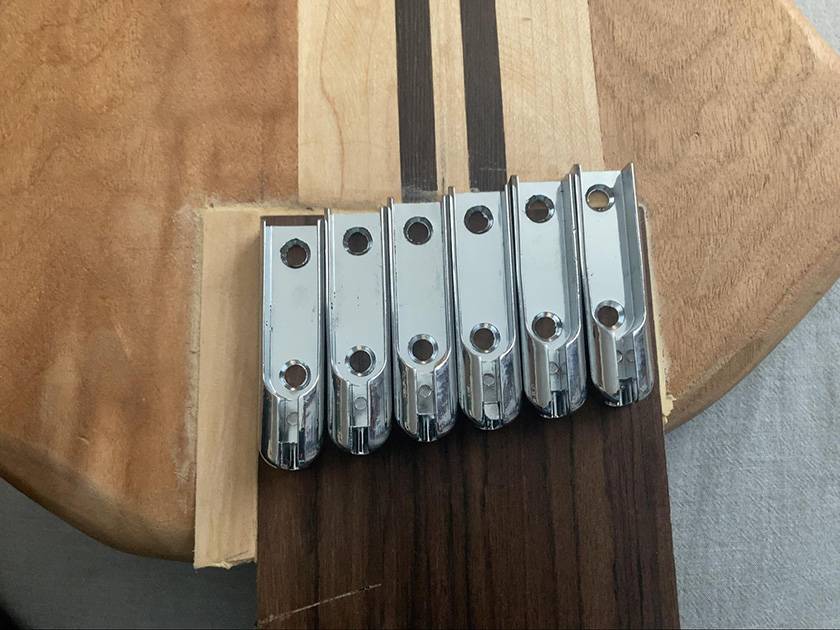
The scale is extended by moving the bridge itself to the end of the body. 34+1inch.
No frets or inlays. That bass also has a lot of bridge overhang, so it should be fine.
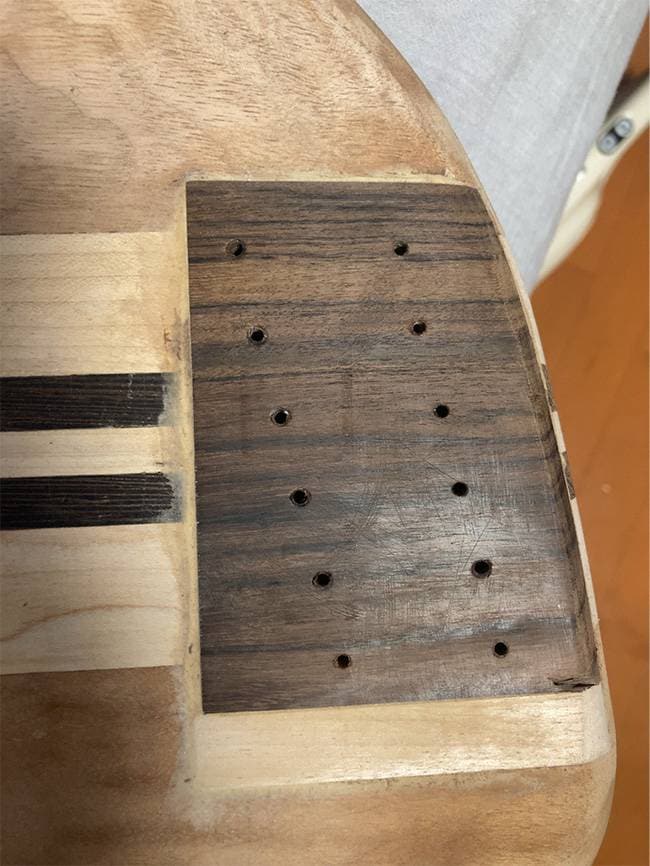
Paint, polish, and drill the bottom holes. The result is a nice messy Wishbass feel.
The bridge placement is at an angle to allow for a wider range of adjustment if you plan to use fan frets or slant frets in the future.
I was told “Action is real low” (string height is real low), so I will leave the rod and frets in place. There are no inlays on it, but I'm going to tape them up in case I need to replace the fingerboard or fretboard later on.
As a side note, Rosette, the company that sells the Zero Glide (a retrofitted zero fret and nut for classical guitars), sells transferable sticker inlays. The advantage of this method is that it does not leave any marks when peeled off.
Next is the head. The 5ply wood of the neck is extended as it is, so it has a purple heart line, but you can see that the slot is shifted to the right. The actual measurement is about 1.5mm.
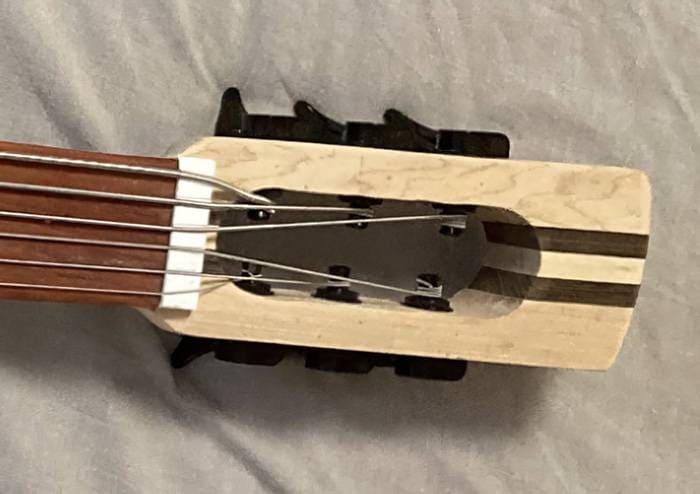
In fact, the part where the left and right pegs are mounted is also completely asymmetrical, with the bass side at just over 19mm and the treble side at 18mm. It would be fine if it were just asymmetrical, but 19mm is not enough to hold the bushings firmly in place, so I shaved off a little to make it thinner.
Furthermore, the neck is wider than the fingerboard between 0 and 1f, and the nut even protrudes from the neck itself...
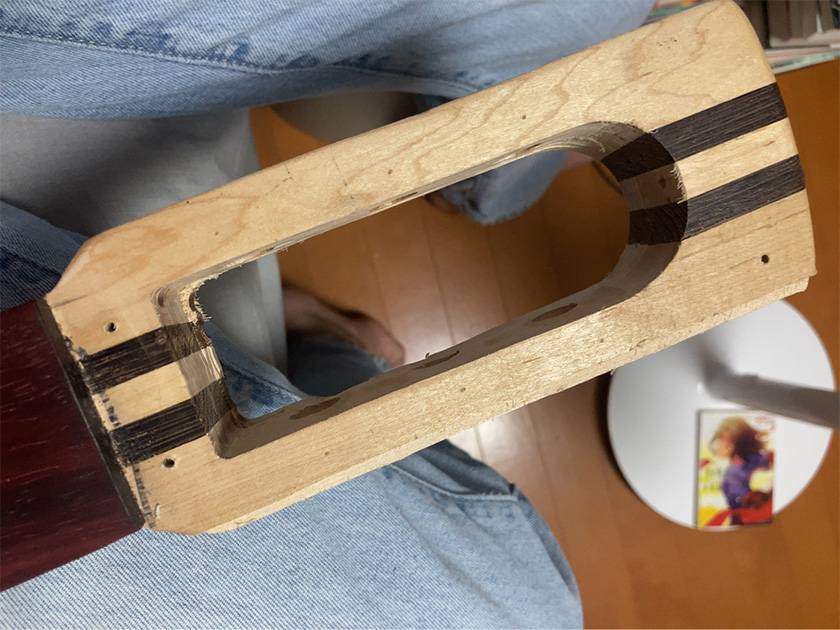
I prepared a template and cut it with the machine all at once. The curved part was interfering with the washers on the pegs, so I extended this part a little as well.
Since the bit on the trimmer cannot process deep enough, the remaining part was shaved off with a small knife.
When using a peg with a split post for a slotted head, it is troublesome to pass the string through the back of the post. By using a side-hole type locking peg, this work can be simplified, and the problem of the angle of entry to the nut changes depending on the number of windings, which is unique to slotted heads and it can be solved to some extent by minimizing the number of windings.
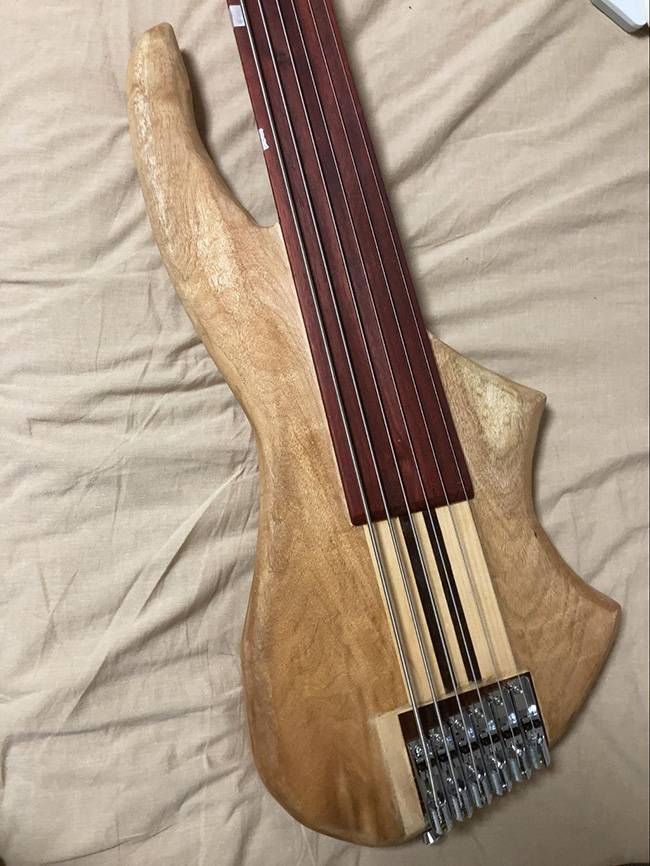
It's starting to look like this.
For those of you who have seen the process up to this point and think it looks like fun, let's buy one for now. You can buy one sometimes from eBay.
For those who think, “Wow, is it really a musical instrument?” It is indeed very well made, but the sound is good.
03. Peripherals (and a little electrical equipment)
Due to the lack of electrical components, a pedal tuner cannot be used. The card tuners and apps have a hard time picking up the B string, and the head of the clip is too thick to hold it.
I had no choice but to use D’Addario's Micro Clip Free tuner.
D’ADDARIO / PW-CT-21 NS Micro Clip Free Tuner
The Micro Clip Free Tuner is highly functional for the price and it picks up the sound perfectly.
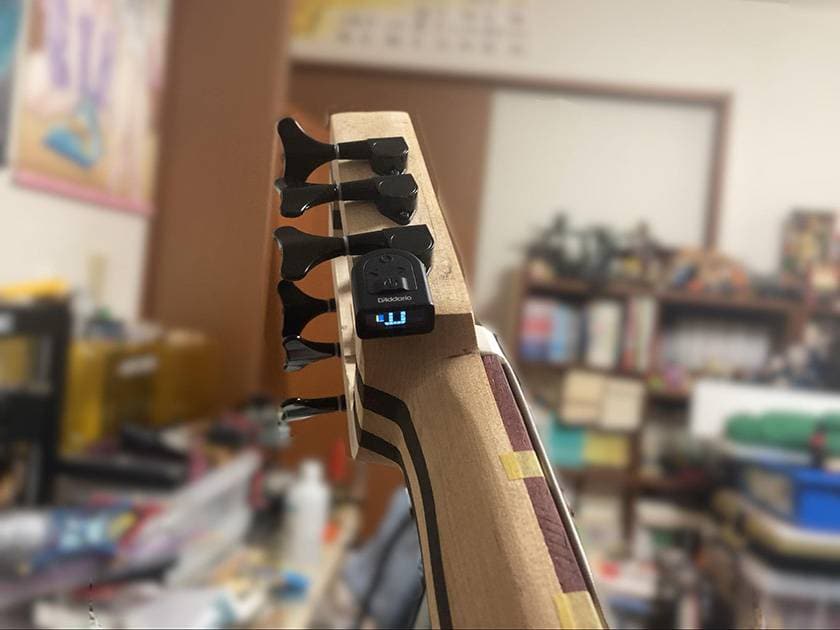
...I take back my previous comment, it's hard to see!
I found that it is not suitable for horizontal pegs. So, it seems to be difficult for classical guitars as well...
As a side note, the Micro series are all made with the same head, but with different shapes for the clips and screw fasteners at the foot. Maybe it could be used for viola or something.
If so, tuning would be very troublesome. I will add a temporary pickup for an evil reason.
I will put a no-brand ribbon piezo (I forgot to take a picture ......) under the bridge. It is supposed to be for acoustic guitar, but it is a little thick, so I made a groove on the body with a carving knife and aligned it.
I put a jack on the back panel and connected it directly. I'll see what I can do if I ever decide to install a proper electrical component.
Basically, the Piezo pickup requires amplification, but the tuner picked it up for now, so that's good. If I load an electromagnetic pickup from now on and the output difference comes out, let's install an op-amp.
04. final specs
Although the guitar was made as well as advertised, with a lot of wood putty on it, we are very satisfied with the extremely loud raw sound and the extremely thick, yet easy-to-play neck, which is typical of Wishbass.
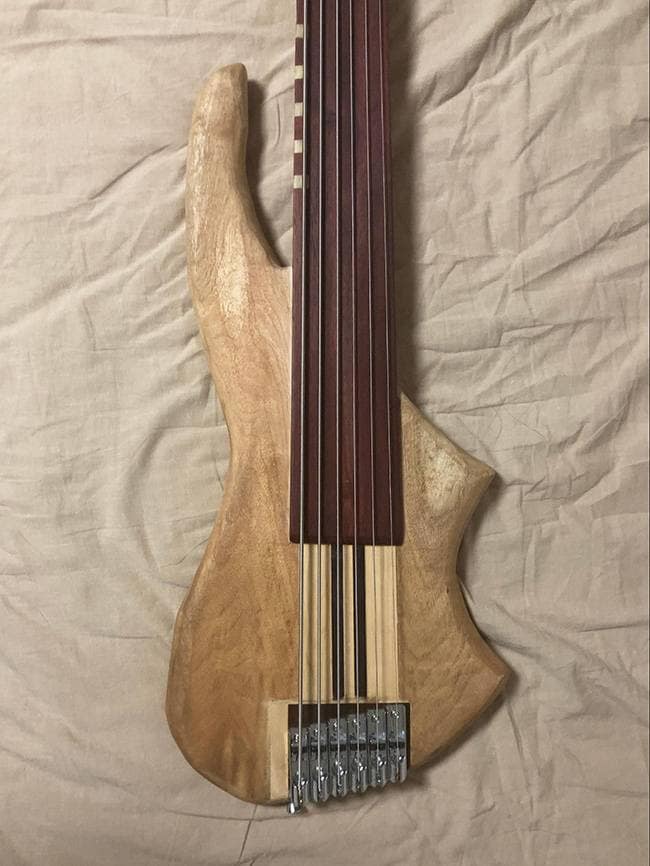
| Weight: | 3.7kg |
| Scale: | 35inch |
| Tuning: | LB-E-A-D-G-HC |
| No. of frets: | About 40 |
| Nut width: | 58mm |
| Neck thickness: | 34mm |
| Amount of space between strings and bridge: | 14mm |
| Electrical component: | Ribbon Piezo pickups No Volume & No Tone |
Due to the thickness of the neck, it does not bend at all. After machining, the neck has experienced rain, typhoons, and mid-summer days several times, but it is by far the most stable. Naturally, there is no neck bend.
In addition, it has become difficult to play other instruments.
Wishbass is great.
The “sound & person” column is made up of contributions from you.
For details about contributing, click here.





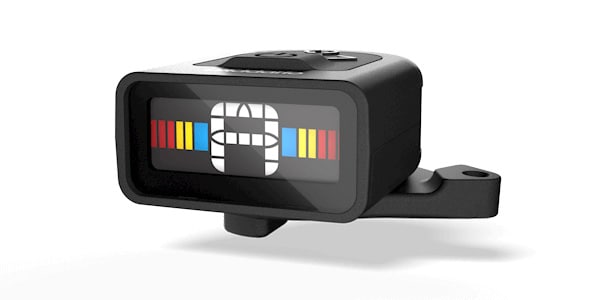


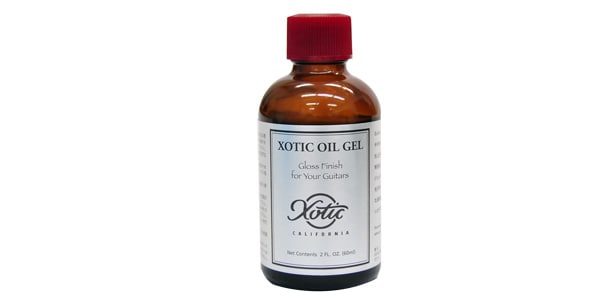
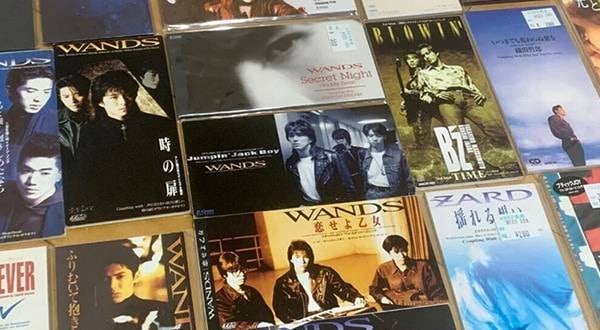
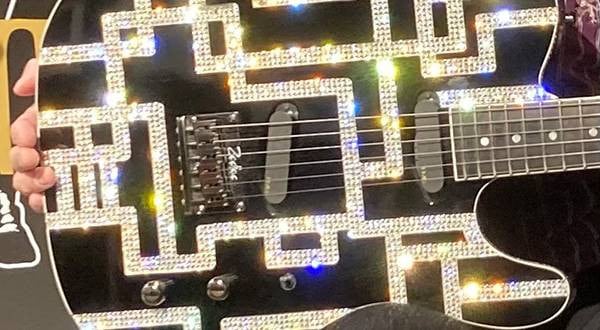
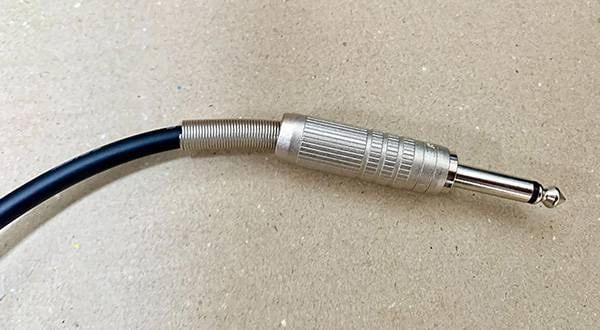

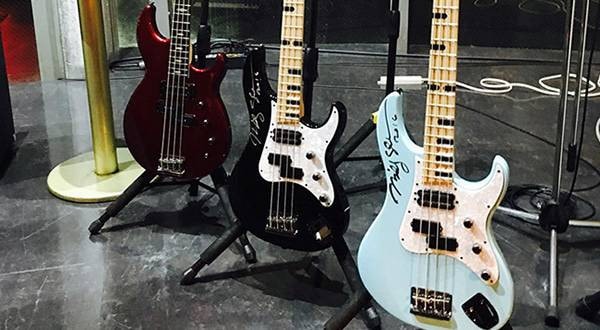
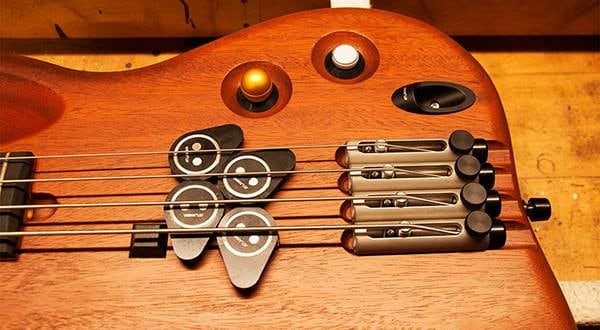
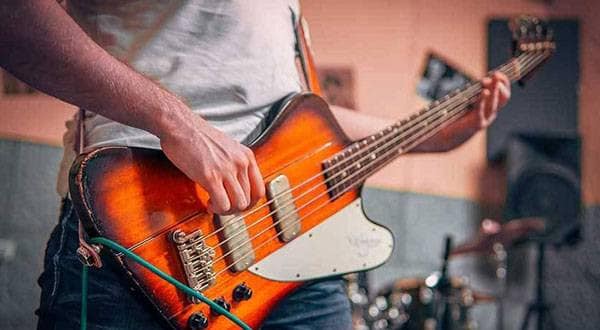
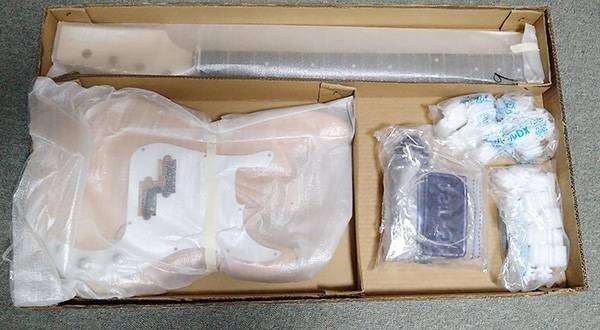
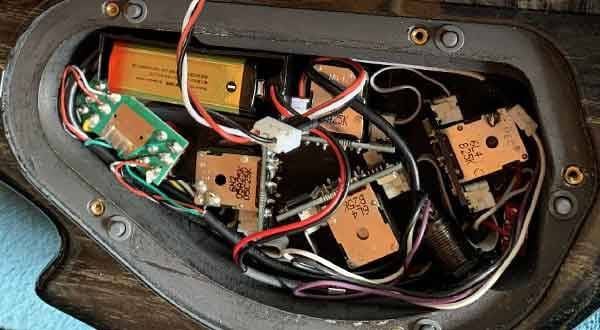
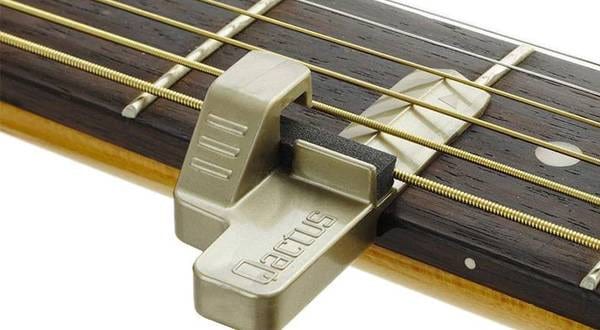

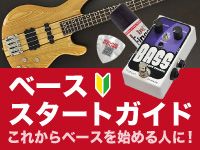 ベーススタートガイド
ベーススタートガイド
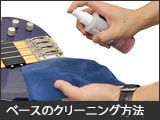 ベースのクリーニング方法
ベースのクリーニング方法
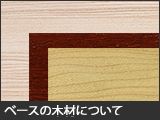 ベースの木材について
ベースの木材について
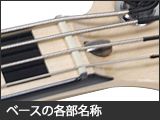 ベースの各部名称
ベースの各部名称
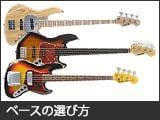 ベースの選び方
ベースの選び方
 ベース初心者講座
ベース初心者講座

